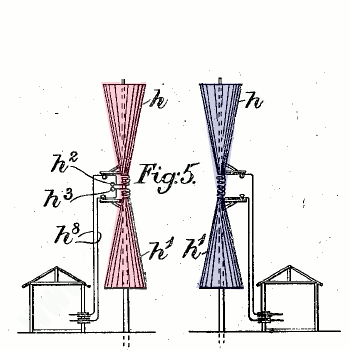Products Category
- FM Transmitter
- 0-50w 50w-1000w 2kw-10kw 10kw+
- TV Transmitter
- 0-50w 50-1kw 2kw-10kw
- FM Antenna
- TV Antenna
- Antenna Accessory
- Cable Connector Power Splitter Dummy Load
- RF Transistor
- Power Supply
- Audio Equipments
- DTV Front End Equipment
- Link System
- STL system Microwave Link system
- FM Radio
- Power Meter
- Other Products
- Special for Coronavirus
Products Tags
Fmuser Sites
- es.fmuser.net
- it.fmuser.net
- fr.fmuser.net
- de.fmuser.net
- af.fmuser.net ->Afrikaans
- sq.fmuser.net ->Albanian
- ar.fmuser.net ->Arabic
- hy.fmuser.net ->Armenian
- az.fmuser.net ->Azerbaijani
- eu.fmuser.net ->Basque
- be.fmuser.net ->Belarusian
- bg.fmuser.net ->Bulgarian
- ca.fmuser.net ->Catalan
- zh-CN.fmuser.net ->Chinese (Simplified)
- zh-TW.fmuser.net ->Chinese (Traditional)
- hr.fmuser.net ->Croatian
- cs.fmuser.net ->Czech
- da.fmuser.net ->Danish
- nl.fmuser.net ->Dutch
- et.fmuser.net ->Estonian
- tl.fmuser.net ->Filipino
- fi.fmuser.net ->Finnish
- fr.fmuser.net ->French
- gl.fmuser.net ->Galician
- ka.fmuser.net ->Georgian
- de.fmuser.net ->German
- el.fmuser.net ->Greek
- ht.fmuser.net ->Haitian Creole
- iw.fmuser.net ->Hebrew
- hi.fmuser.net ->Hindi
- hu.fmuser.net ->Hungarian
- is.fmuser.net ->Icelandic
- id.fmuser.net ->Indonesian
- ga.fmuser.net ->Irish
- it.fmuser.net ->Italian
- ja.fmuser.net ->Japanese
- ko.fmuser.net ->Korean
- lv.fmuser.net ->Latvian
- lt.fmuser.net ->Lithuanian
- mk.fmuser.net ->Macedonian
- ms.fmuser.net ->Malay
- mt.fmuser.net ->Maltese
- no.fmuser.net ->Norwegian
- fa.fmuser.net ->Persian
- pl.fmuser.net ->Polish
- pt.fmuser.net ->Portuguese
- ro.fmuser.net ->Romanian
- ru.fmuser.net ->Russian
- sr.fmuser.net ->Serbian
- sk.fmuser.net ->Slovak
- sl.fmuser.net ->Slovenian
- es.fmuser.net ->Spanish
- sw.fmuser.net ->Swahili
- sv.fmuser.net ->Swedish
- th.fmuser.net ->Thai
- tr.fmuser.net ->Turkish
- uk.fmuser.net ->Ukrainian
- ur.fmuser.net ->Urdu
- vi.fmuser.net ->Vietnamese
- cy.fmuser.net ->Welsh
- yi.fmuser.net ->Yiddish
Who invented Antennas?
There's no easy answer to that question because radio evolved into a useful technology through the second half of the 19th century thanks to the work of quite a few different people—both theoretical scientists and practical experimenters.

Who were these pioneers? Scottish physicist James Clerk Maxwell figured out a theory of radio around 1864, and Heinrich Hertz proved that radio waves really did exist about 20 years later (they were called Hertzian waves in his honor for some time afterward). Several years later, at a meeting in Oxford, England on August 14, 1894, English physicist, Oliver Lodge, demonstrated how radio waves could be used for signalling from one room to another in what he later described (in his 1932 autobiography) as "a very infantile kind of radio-telegraphy." Lodge filed a US patent for "electric telegraphy" on February 1, 1898, describing apparatus for "an operator, by means of what is now known as 'Hertzian-wave telegraphy' to transmit messages across space to any one or more of a number of different individuals in various localities..." Unknown to Lodge at that stage, Guglielmo Marconi was carrying out his own experiments in Italy around the same time—and ultimately proved the better showman: many people think of him as the "inventor of radio" to this day whereas, in truth, he was only one of a group of forward-thinking people who helped turned the science of electromagnetic waves into a practical, world-changing technology.
None of the original radio experiments used transmitters or receivers that we would instantly recognize today. Hertz and Lodge, for example, used a piece of equipment called a spark-gap oscillator: a couple of zinc balls attached to short lengths of copper wire with an air gap in between them. Lodge and Marconi both used Branly coherers (glass tubes packed with metal filings) for detecting the waves they'd transmitted and received, though Marconi found them "too erratic and unreliable" and eventually designed his own detector. Armed with this new equipment, he carried out systematic experiments into how the height of an antenna affected the distance over which he could transmit a signal.
And the rest, as they say, is history!
Here are some antennas for your reference:
DP100 1/2 Half Wave FM Dipole Antenna
Circular Elliptical Polarized CP100 Antenna
FU-DV1 1 bay FM Dipole Antenna

